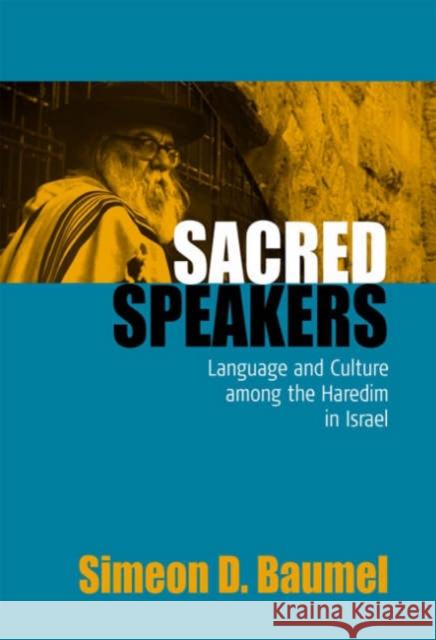Sacred Speakers: Language and Culture among the ultra-Orthodox in Israel » książka
Sacred Speakers: Language and Culture among the ultra-Orthodox in Israel
ISBN-13: 9781845450625 / Angielski / Twarda / 2006 / 248 str.
Sacred Speakers: Language and Culture among the ultra-Orthodox in Israel
ISBN-13: 9781845450625 / Angielski / Twarda / 2006 / 248 str.
(netto: 483,13 VAT: 5%)
Najniższa cena z 30 dni: 498,70 zł
ok. 30 dni roboczych
Bez gwarancji dostawy przed świętami
Darmowa dostawa!
Despite its outwardly static and traditional appearance, the Haredi (ultra-Orthodox) world is engaged in a constant cultural dialogue with modernity. This dialogue is exceptionally visible in the realm of language as shown in this study that examines the language and culture of four ultra-Orthodox groups found in Israel: the Ashkenazi (European) Mitnagdim-Lithuanians, and the Oriental Sefaradi Haredim. After the presentation of the historical background of the four sects, the author analyzes the public and private domains, focusing on language as used in many different forms and situations, and on the management of language. He furthermore compares the language policies of British, American, and French Haredim belonging to the Habad, Gur, Mitnagdic and Sefaradi sects to those in Israel and finds many similarities between the groups. The book concludes with the proposal of an interdisciplinary model, based on the Haredi case study, which can be used by language planners worldwide to understand the issues of language maintenance and loss among ethnic and ethno-religious minorities. Simeon D. Baumel was born in the United States and moved to Israel in 1969 where he studied organic chemistry and taught in the field for many years before completing a Ph.D. in linguistics at Bar Ilan University. He is the coordinator of EFL studies at Achva College, Beer Tuvia and has written a number of articles dealing with language and culture among Jewish minority populations.
Despite its outwardly static and traditional appearance, the Haredi (ultra-Orthodox) world is engaged in a constant cultural dialogue with modernity. This dialogue is exceptionally visible in the realm of language as shown in this study that examines the language and culture of four ultra-Orthodox groups found in Israel: the Ashkenazi (European) Mitnagdim-Lithuanians, and the Oriental Sefaradi Haredim. After the presentation of the historical background of the four sects, the author analyzes the public and private domains, focusing on language as used in many different forms and situations, and on the management of language. He furthermore compares the language policies of British, American, and French Haredim belonging to the Habad, Gur, Mitnagdic and Sefaradi sects to those in Israel and finds many similarities between the groups. The book concludes with the proposal of an interdisciplinary model, based on the Haredi case study, which can be used by language planners worldwide to understand the issues of language maintenance and loss among ethnic and ethno-religious minorities.Simeon D. Baumel was born in the United States and moved to Israel in 1969 where he studied organic chemistry and taught in the field for many years before completing a Ph.D. in linguistics at Bar Ilan University. He is the coordinator of EFL studies at Achva College, Beer Tuvia and has written a number of articles dealing with language and culture among Jewish minority populations.











